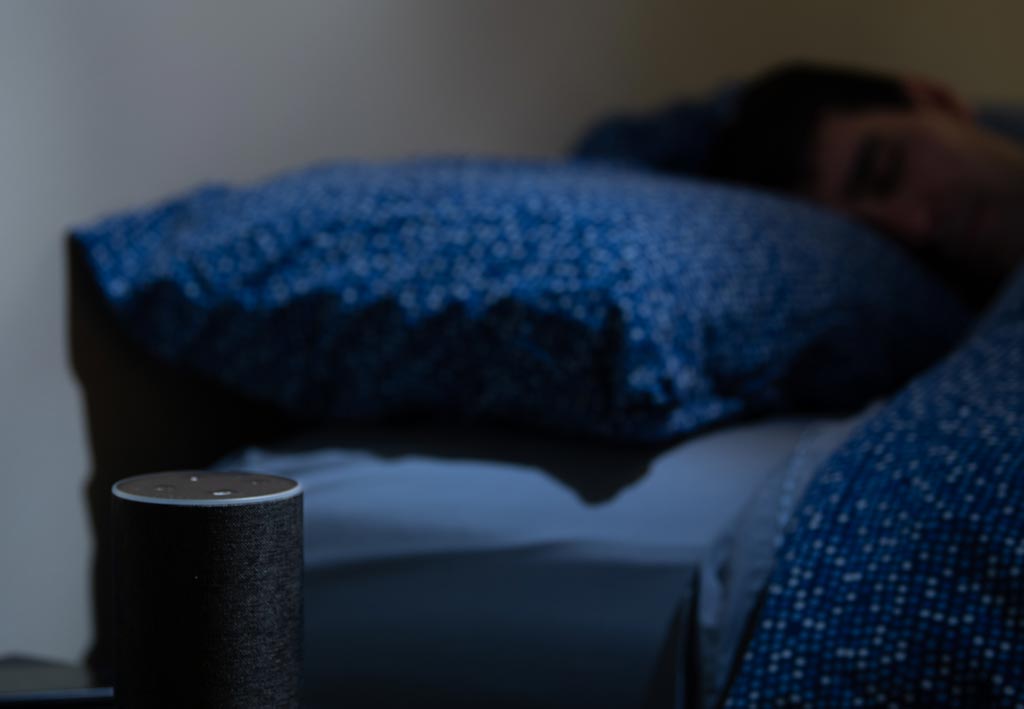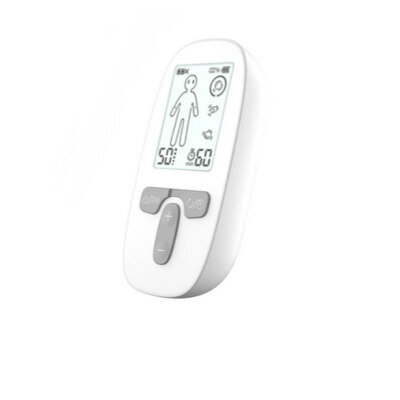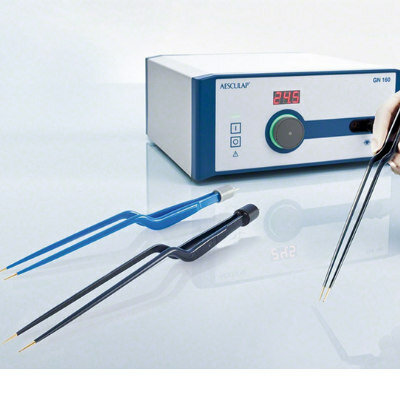AI Aids Smart Devices to Detect Cardiac Arrest
|
By HospiMedica International staff writers Posted on 29 Jul 2019 |

Image: An app for a smart device allows it to detect cardiac arrest and call for help (Photo courtesy of Sarah McQuate/ UW).
A new study reveals how a smart speaker can spot a heart attack by detecting agonal breathing, a brainstem reflex that arises in the setting of severe hypoxia.
Developed by researchers at the University of Washington (UW; Seattle, USA), the proof of concept tool is installed as an app into a smartphone or a support vector machine (SVM) such as a Google Home or Amazon Alexa speaker in order to monitor breathing and call for help if needed. The SVM was trained using real agonal breathing as captured from calls to Seattle Emergency Medical Services by bystanders, who recorded them by putting their phones up to the patient’s mouth so that the 911 dispatcher could determine whether the patient needed immediate cardiopulmonary resuscitation (CPR).
In all, the researchers collected 162 calls between 2009 and 2017 and extracted 2.5 seconds of audio at the start of each agonal breath, for a total of 236 clips. Various machine-learning techniques were used to boost the dataset to 7,316 positive clips. For the negative dataset, they used 83 hours of audio data collected during sleep studies, yielding 7,305 sound samples, containing typical sounds that people make in their sleep, such as snoring or obstructive sleep apnea (OSA). They then used machine learning to create a tool that could aid an SVM detect agonal breathing 97% of the time from up to six meters away. The study was published on June 19, 2019, in npj Digital Medicine.
“This kind of breathing happens when a patient experiences really low oxygen levels. It’s sort of a guttural gasping noise, and its uniqueness makes it a good audio biomarker to use to identify if someone is experiencing a cardiac arrest,” said co-corresponding author Jacob Sunshine, MD, of the UW School of Medicine. “Cardiac arrests are a very common way for people to die, and right now many of them can go unwitnessed. Part of what makes this technology so compelling is that it could help us catch more patients in time for them to be treated.”
“A lot of people have smart speakers in their homes, and these devices have amazing capabilities. This could run locally on the processors contained in the Alexa. It’s running in real time, so you don’t need to store anything or send anything to the cloud,” said co-corresponding author Shyam Gollakota, PhD, of the UW School of Computer Science and Engineering. “We envision a contactless system that works by continuously and passively monitoring the bedroom for an agonal breathing event, and alerts anyone nearby to come provide CPR. And then if there’s no response, the device can automatically call 911.”
Out-of-hospital cardiac arrest is a leading cause of death worldwide. Rapid diagnosis and initiation of cardiopulmonary resuscitation (CPR) is the cornerstone of therapy for victims of cardiac arrest. Yet a significant fraction of cardiac arrest victims have no chance of survival, because they experience an unwitnessed event, often in the privacy of their own homes.
Related Links:
University of Washington
Developed by researchers at the University of Washington (UW; Seattle, USA), the proof of concept tool is installed as an app into a smartphone or a support vector machine (SVM) such as a Google Home or Amazon Alexa speaker in order to monitor breathing and call for help if needed. The SVM was trained using real agonal breathing as captured from calls to Seattle Emergency Medical Services by bystanders, who recorded them by putting their phones up to the patient’s mouth so that the 911 dispatcher could determine whether the patient needed immediate cardiopulmonary resuscitation (CPR).
In all, the researchers collected 162 calls between 2009 and 2017 and extracted 2.5 seconds of audio at the start of each agonal breath, for a total of 236 clips. Various machine-learning techniques were used to boost the dataset to 7,316 positive clips. For the negative dataset, they used 83 hours of audio data collected during sleep studies, yielding 7,305 sound samples, containing typical sounds that people make in their sleep, such as snoring or obstructive sleep apnea (OSA). They then used machine learning to create a tool that could aid an SVM detect agonal breathing 97% of the time from up to six meters away. The study was published on June 19, 2019, in npj Digital Medicine.
“This kind of breathing happens when a patient experiences really low oxygen levels. It’s sort of a guttural gasping noise, and its uniqueness makes it a good audio biomarker to use to identify if someone is experiencing a cardiac arrest,” said co-corresponding author Jacob Sunshine, MD, of the UW School of Medicine. “Cardiac arrests are a very common way for people to die, and right now many of them can go unwitnessed. Part of what makes this technology so compelling is that it could help us catch more patients in time for them to be treated.”
“A lot of people have smart speakers in their homes, and these devices have amazing capabilities. This could run locally on the processors contained in the Alexa. It’s running in real time, so you don’t need to store anything or send anything to the cloud,” said co-corresponding author Shyam Gollakota, PhD, of the UW School of Computer Science and Engineering. “We envision a contactless system that works by continuously and passively monitoring the bedroom for an agonal breathing event, and alerts anyone nearby to come provide CPR. And then if there’s no response, the device can automatically call 911.”
Out-of-hospital cardiac arrest is a leading cause of death worldwide. Rapid diagnosis and initiation of cardiopulmonary resuscitation (CPR) is the cornerstone of therapy for victims of cardiac arrest. Yet a significant fraction of cardiac arrest victims have no chance of survival, because they experience an unwitnessed event, often in the privacy of their own homes.
Related Links:
University of Washington
Latest AI News
Channels
Surgical Techniques
view channel
Robotic Assistant Delivers Ultra-Precision Injections with Rapid Setup Times
Age-related macular degeneration (AMD) is a leading cause of blindness worldwide, affecting nearly 200 million people, a figure expected to rise to 280 million by 2040. Current treatment involves doctors... Read more
Minimally Invasive Endoscopic Surgery Improves Severe Stroke Outcomes
Intracerebral hemorrhage, a type of stroke caused by bleeding deep within the brain, remains one of the most challenging neurological emergencies to treat. Accounting for about 15% of all strokes, it carries... Read morePatient Care
view channel
Revolutionary Automatic IV-Line Flushing Device to Enhance Infusion Care
More than 80% of in-hospital patients receive intravenous (IV) therapy. Every dose of IV medicine delivered in a small volume (<250 mL) infusion bag should be followed by subsequent flushing to ensure... Read more
VR Training Tool Combats Contamination of Portable Medical Equipment
Healthcare-associated infections (HAIs) impact one in every 31 patients, cause nearly 100,000 deaths each year, and cost USD 28.4 billion in direct medical expenses. Notably, up to 75% of these infections... Read more
Portable Biosensor Platform to Reduce Hospital-Acquired Infections
Approximately 4 million patients in the European Union acquire healthcare-associated infections (HAIs) or nosocomial infections each year, with around 37,000 deaths directly resulting from these infections,... Read moreFirst-Of-Its-Kind Portable Germicidal Light Technology Disinfects High-Touch Clinical Surfaces in Seconds
Reducing healthcare-acquired infections (HAIs) remains a pressing issue within global healthcare systems. In the United States alone, 1.7 million patients contract HAIs annually, leading to approximately... Read moreHealth IT
view channel
Printable Molecule-Selective Nanoparticles Enable Mass Production of Wearable Biosensors
The future of medicine is likely to focus on the personalization of healthcare—understanding exactly what an individual requires and delivering the appropriate combination of nutrients, metabolites, and... Read moreBusiness
view channel
Philips and Masimo Partner to Advance Patient Monitoring Measurement Technologies
Royal Philips (Amsterdam, Netherlands) and Masimo (Irvine, California, USA) have renewed their multi-year strategic collaboration, combining Philips’ expertise in patient monitoring with Masimo’s noninvasive... Read more
B. Braun Acquires Digital Microsurgery Company True Digital Surgery
The high-end microsurgery market in neurosurgery, spine, and ENT is undergoing a significant transformation. Traditional analog microscopes are giving way to digital exoscopes, which provide improved visualization,... Read more
CMEF 2025 to Promote Holistic and High-Quality Development of Medical and Health Industry
The 92nd China International Medical Equipment Fair (CMEF 2025) Autumn Exhibition is scheduled to be held from September 26 to 29 at the China Import and Export Fair Complex (Canton Fair Complex) in Guangzhou.... Read more














